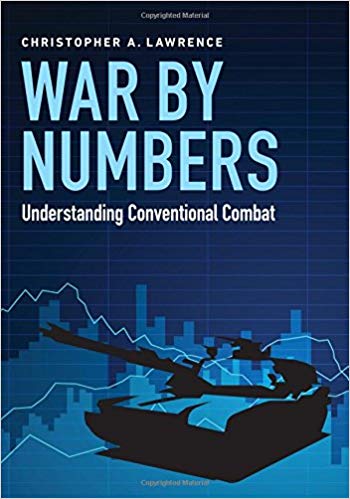
Seeing how the word “Lethality” has developed a life of its own….I decided to take a look at what was discussed on lethality in my book War by Numbers. Just to clarify, I have never considered how “lethality” should be defined or what its definition should consist of, but simply used the word as commonly used in American English.
I ended up discussing lethality in two chapters of my book: Chapter 13: The Effects of Dispersion on Combat, and Chapter 15: Casualties.
In Chapter 13: The Effects of Dispersion on Combat, I discuss it only the most general way. For example: “The effectiveness and lethality of weapons have continued to increase over the past four hundred years, yet the loss rates among forces in combat have declined.” (page 161) and “He postulated that forces continued to disperse over time to compensate for the increased lethality of weapons.” (also page 161). This chapter, pages 161-173, should probably be read by anyone looking to discuss “lethality.”
In Chapter 15: Casualties, I discuss lethality as related to wounded-to-killed ratio and specific weapons that wound and/or kill. There is an entire section in the book called “Lethality of Weapons” (page 183). This looks at the percent of people killed among those wounded by weapon. So there are multiple tables showing the “Lethality of Weapon,” some drawn from the Textbook of Military Medicine. This is a fairly extended discussion that addresses the lethality of weapons over multiple weapons over multiple wars. It then morphs into a discussion of wounded-to-killed ratios (pages 181-205). Lethality in this case refers to people killed or died of wounds.
Again, I am not comfortable by what recent writers mean by their use of the word “lethality.”


